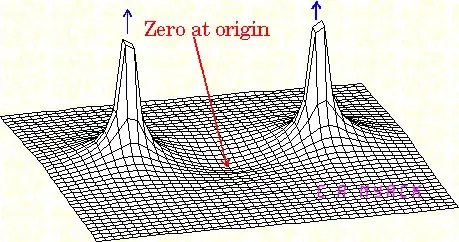I have three questions that have been troubling me for a long while:
We say that, in a Bode plot, there is a drop in gain of 20 dB per decade whenever a pole is encountered. But aren't poles defined as the values of \$s\$ which make the transfer function infinity? So why doesn't the gain go up at this point instead of going down?
Physically what happens when we feed a system with a pole frequency?
Also, consider a transfer function \$1/(s+2)\$. The system has pole at \$s=(-2+j0)\$. That is, for the pole, \$\sigma=-2\$ and \$\omega=0\$. But when we apply a sinusoidal signal to its input and draw the Bode plot, why do we say that there is a pole at 2 rad/sec (even though, for the pole, \$\omega=0\$ and \$\sigma =-2\$)?

